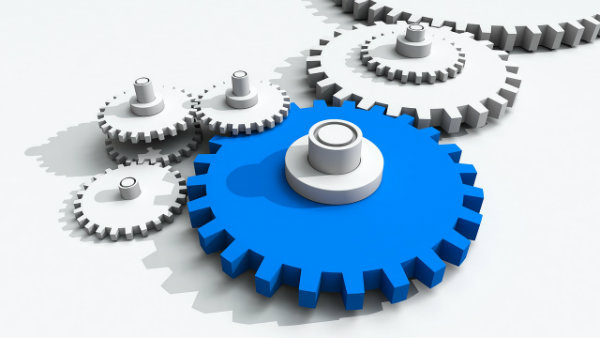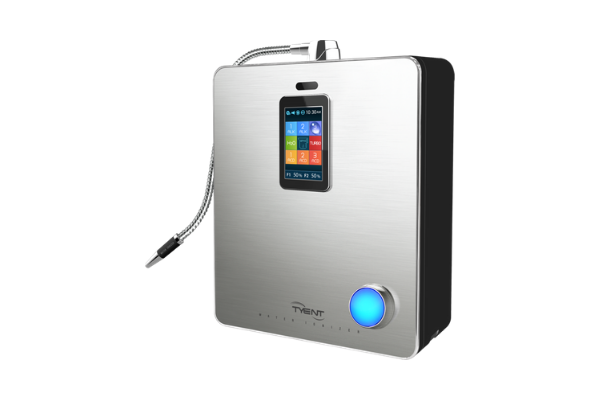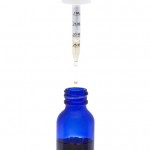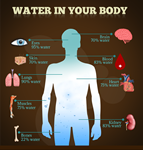How-to Clean and Maintain a Water Ionizer
Many people around the world have taken notice of the powerful impact that a water ionizer machine can have on human health, which has been reflected through the increase in ionizers being purchased.
This rising popularity comes as no surprise, as these machines can create alkaline water that has been proven through countless scientific studies to soothe heartburn symptoms and aid in weight loss, among other health benefits.

Much like how regular maintenance is needed for any household device you buy; regular maintenance is required for the longevity and functionality of a water ionizer.
By not properly maintaining your machine, unwanted sediments can build up and neutralize the machine’s ability to produce clean, healthy alkaline water benefits.
There is no need to worry though – our guide below will cover:
Types of Water Ionizer Cleaning Systems
When is Cleaning and Maintaining a Water Ionizer Necessary?
Do’s and Don’ts of Maintaining a Water Ionizer
How to Clean the Water Ionizer
How to Choose the Right Water Ionizer
How to Clean and Maintain a Water Ionizer: What You Need to Know
Follow along to become an expert at keeping your machine in tiptop shape to continue producing top quality ionized alkaline water for years to come!
Types of Water Ionizer Cleaning Systems
Most water ionizers are built and manufactured to clean themselves, however, some machines have better self-cleaning systems than others. Cleaning types include automatic, single, periodic, and non-automatic (or manual).
Machines that have single or periodic cleaning systems require the user to manually clean the machine periodically to keep it functioning at a high level.
There are water ionizers that don’t have an automatic cleaning system, requiring you to manually clean your machine with a cleaning cartridge every 3 to 6 months. We don’t recommend buying one of these machines because they require more maintenance than others, causing more problems for the user in the long-run.
For best results – we recommend that you look for an ionizer that self-cleans automatically when the machine starts up and shuts down. Machines with an automatic cleaning system get the most efficient water ionization over time and they have the longest lifespan possible.
When is Cleaning and Maintaining a Water Ionizer Necessary?

Some signs that you can look for to determine if your water ionizer needs a good deep cleaning or maintenance are:
- The pipes, plates, and tubes in your machine are clogged with scale buildup of excessive calcium or lime that can cause the machine to fail. This scale buildup tends to happen the most to people who live in areas with hard water and is the #1 cause of ionizer failure.
- Your water ionizer no longer produces alkaline water with a strong negative ORP of -200 to -400. A strong negative ORP is needed for your machine to produce the many health benefits of alkaline water that is rich with antioxidants that your body needs. You can determine your water’s ORP levels by using an ORP meter.
- Your water ionizer machine creates alkaline water without small hydrogen bubbles. A machine that is clean and properly-working creates alkaline ionized water that contains thousands of small hydrogen bubbles through the process of ionization.
- Your ionized alkaline water tastes weird and unusual.
- Your ionizer generates NO water flow, or your water flow starts to slow down. This can happen to any machine, regardless of their automatic cleaning system.
- Your water’s pH levels start to drop. This is more likely to happen in machines that don’t have a continuous cleaning system. You can test your water’s pH levels by using a pH test kit.
- Your water ionizer machine automatically stops working or shuts off while producing alkaline or acidic water.
The level of care and maintenance that you will have to put in for the life of your machine depends on where you live, and if your local water supply is hard or soft.
Do’s and Don’ts of Maintaining a Water Ionizer
Make sure to keep these do’s and don’ts of water ionizer maintenance top of mind for the safety of both the user and the machine.
Do’s:
- Replace your machine’s internal filters every 6-12 months. This will take you less than 5 minutes in most water ionizers. Be sure to flush all new replacement filters for 2 to 5 minutes before putting them into the machine.
- Perform regular internal cleaning with a cleaning cartridge or recommended cleaning protocol. Most ionizer brands offer a cleaning cartridge that can remove mold or bacteria that builds up in the parts of your machine that you can’t see. Other companies may have a cleaning protocol that they recommend you perform manually using products available at your local stores. Consult the manufacturer if there isn’t a cleaning cartridge or cleaning protocol included when you purchase your machine.
- Keep the exterior of your water ionizer looking fresh and like new at least once a week by wiping the machine down with a soft damp cloth or sponge.
Don’ts:
- Do not continue to clean your water ionizer if you started cleaning the machine with a process that is incompatible with the protocols listed in the machine’s product manual. These incompatible processes can be instructions you received from a friend, some random site on the internet, or any source that isn’t the manufacturer.
- Do not clean your ionizer if you do not have adequate time to follow the process all the way through to completion. Even if your machine has a self-cleaning system in place, any manual cleaning that you’ll need to do from time to time needs to be thorough to ensure that any mold or bacteria buildup is removed.
- Avoid using household cleaners to wipe down the exterior of your unit because cleaners can scratch the finish or display panel and cause the control panel’s indicators or buttons to erode or wear off.
How to Clean the Water Ionizer
Here are the steps involved in deep cleaning a water ionizer to make sure it continues producing high-quality alkaline water:
- Remove the water ionizer filter. (If your machine has 2 filters, you will only remove the 2nd one.)
- Insert the citric acid cleaning filter in place of the filter you just removed. (Some cleaning filters are refillable. If yours is refillable, you should add your pack of cleaning powder BEFORE putting the cleaning filter in the ionizer.)
- Run your machine on its “clean water” setting for 3 to 5 minutes. (Different brands call this mode something different – but this is the mode that gives you neutral pH water.)
- Countertop Models Only: After step 3, place the ends of both your machine’s water outlets in a cup or bowl, and continue running your machine just long enough so that the ends of both hoses are submerged.
- Allow your water ionizer to sit unused for about 3 hours.
- Countertop Models Only: After your machine has sat for 3 hours – remove the hoses from your bowl and return them to their rightful positions over your sink.
- Remove the cleaning filter from your water ionizer.
- Put the standard water ionizer filter back in.
- Run your water ionizer on its “clean water” mode for another 3 to 5 minutes to flush out the system.
- Test the pH of your water. Repeat cleaning process, if necessary.
Note: These are fairly universal water ionizer cleaning guidelines. For best results – be sure to follow the cleaning instructions provided by your water ionizer manufacturer! (when available)
We recommend that you clean your water ionizer at least once a year to keep the machine running smoothly – regardless of your source water.
If you happen to have hard water in your area, we recommend using a cleaning cartridge or cleaning protocol at least twice a year.
You can also prolong the life of your water ionizer by periodically flushing the machine with vinegar or citric acid.
How to Choose the Right Water Ionizer
It is now time to put this knowledge to work with regular cleaning procedures to ensure that your machine can always produce the best alkaline water.
However, if you have yet to get your own water ionizer, there is no better time to invest in one than right now. But first, you should take the time to learn as much as you can about the source water in your area.
Learning if your water is “soft” or “hard” will make a powerful difference on how your water ionizer will operate and help determine if you need to purchase a special filter to protect your ionizer plates and water cell from potential scale buildup.
You can learn if your water is “soft” or “hard” by getting this FREE water quality report and analysis that will also show you if your local water is filled with dangerous contaminants that water ionizers can help remove and filter.
Whatever healthy change you want to make in your life, it’s not too late to start. So, take charge today by putting an alkaline water machine into your home for you and your family to enjoy!




Leave a Reply